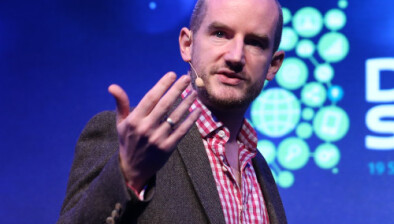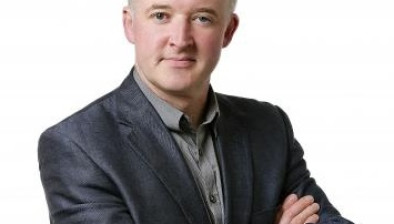Opinion: Would a ‘zero-tolerance’ approach make Dublin city centre safer?

Dr Kevin Wozniak and Dr Ian Marder
Dr Kevin Wozniak and Dr Ian Marder sound a note of caution on calls to step up policing of Dublin city centre.
Commentators regularly lament the state of the Dublin city centre’s North side. Most recently, after a series of violent incidents and media reports, Morning Ireland wrote up its segment with Cllr Janice Boylan with the title ‘No one is really safe’. The minister for justice weighed in to condemn an attack on an American tourist, while an assault on Ukrainian Oleksandr Grekov in July led Gary Gannon TD to argue that “Dublin City simply isn’t safe at night ‘on certain streets’”.
As criminologists, our ears always perk up when crime makes the news. What we are currently seeing in relation to Dublin’s North City Centre is called a ‘moral panic’ — where a frantic sense that ‘something must be done’ follows an incident being honed in on, amplified, and generalised into representing a wider social issue. Inevitably, this causes a frenzy among commentators, politicians and on social media, often laced with classist and racist undertones and accompanied by calls for harsher policing, ‘zero-tolerance crackdowns’ and, ultimately, the greater use of imprisonment.
We have seen such calls in the media of late. On Newstalk last week, Ciara Kelly called for “zero tolerance” to “reclaim the city” from “feral gangs”. This followed a segment in March calling for “a zero-tolerance crackdown on any infringements of the law” by gardaí to eliminate drug use and antisocial behaviour on O’Connell Street. Then, Kelly pointed to New York City as an example of a place where zero-tolerance policing strategies successfully “cleaned up” downtown.
As you decide whether or not to support these calls, we ask you to consider a couple of points from the criminological research. First, the fact that violent crimes receive media coverage — however shocking the incidents are — does not necessarily mean that such incidents are becoming more common. A moral panic is usually accompanied by claims that a type of crime is increasing — albeit without sufficient evidence to support this claim. The media must better contextualise reporting to help us understand the frequency, as well as the severity, of different types of crimes in the nation over time.
Second, while it is important to be concerned about violent crime and to take proactive measures to prevent and reduce it, the worst political response to a moral panic is action that gives the illusion of a useful response, but is actually likely to waste resources or even make the situation worse. A ‘zero-tolerance crackdown’ would be a perfect example of such a counterproductive response — as one of our home countries, the United States, learned the hard way.
Zero-tolerance policing was inspired by the ‘Broken Windows’ theory of crime. This theory predicts that deterioration in the physical upkeep of a neighbourhood combined with an increase in low-level antisocial behaviour, such as public drunkenness and begging, signals that the neighbourhood is a ‘safe place’ to get away with crime. According to the theory, the presence of low-level deviance attracts people who are motivated to commit more serious crimes.
During the height of the American crime wave in the late 1980s and early 1990s, many urban police departments across the United States embraced this theory and significantly increased the number of people they searched and arrested for minor, non-violent offences.
The evidence to support this idea was questionable from the outset. Thirty years later, however, the research has clearly demonstrated that a single-minded focus on arresting people fails to make cities safer. As a review of research on policing strategies in the United States concludes, “aggressive order maintenance strategies that target individual disorderly behaviours do not generate significant crime reductions”. The most effective strategies involved police partnering with communities to address social problems in a holistic way and with a much wider set of tools than simple arrests.
George Kelling, one of the co-founders of the original Broken Windows theory, recently argued that too many US police departments misinterpreted his theory. He wrote that good policing should seek the “least intrusive means of solving a problem” and involves police partnerships with actors across the public and community sectors. Kelling admitted that “there’s been a lot of things done in the name of Broken Windows that I regret”.
As always happens in such circumstances, American police who adopted a zero-tolerance mentality disproportionately targeted people experiencing poverty and addiction, and people from minority ethnic communities. Notably, zero-tolerance was ‘better’ at targeting low-level, non-violent deviance than it was at preventing real violence. It also had a drastic and negative impact on police-community relations. If we saw a zero-tolerance approach to policing here in Dublin, it is safe to assume this would have the same effect: penalising the most vulnerable, targeting minor antisocial behaviour that makes us uncomfortable rather than the kind of violence that really scares us, and worsening the relationship between the police and our working class and minority ethnic communities — without making the city safer.
This history teaches us that a Garda ‘crackdown’ would not create a sustainable reduction in crime. Instead, the government should respond by bringing together many stakeholders to offer assistance to persons who are struggling with addiction, poverty, or homelessness in the city. Gardaí should be one part of this coalition, in partnership with various public and community services, businesses and residents, to find non-punitive means of promoting public safety. Gannon usefully made this point, arguing that issues like dereliction and addiction ultimately require action by local authorities and health services — not primarily the police and criminal justice system.
As Ireland debates how to address the various social problems that are intertwined with the nation’s housing and cost-of-living crises, we must avoid the trap of thinking that we can arrest our way out of social problems without causing further harm to our poorest and most vulnerable neighbours. There is no other walk of life where the causes of a problem are seen as anything other than the key to understanding, preventing and responding to that problem. But when the problem is crime, there is a tendency for us to lose the run of ourselves in ways that make it less likely for us to develop responses that will actually improve the situation.
An obsession with arrests was partially responsible for exploding America’s imprisonment rate. With Ireland’s prison population already rising dangerously, we want to see this country make smart decisions that will improve public safety — not make the same mistakes as other countries.
- Dr Kevin H. Wozniak is director of the Research Centre for Criminology at Maynooth University School of Law and Criminology. His work focuses on the politics of crime and criminal justice, including public attitudes. Dr Ian D. Marder is assistant professor in criminology at Maynooth University. His work centres around criminal justice reform and communicating the lessons from research to a wider audience.







